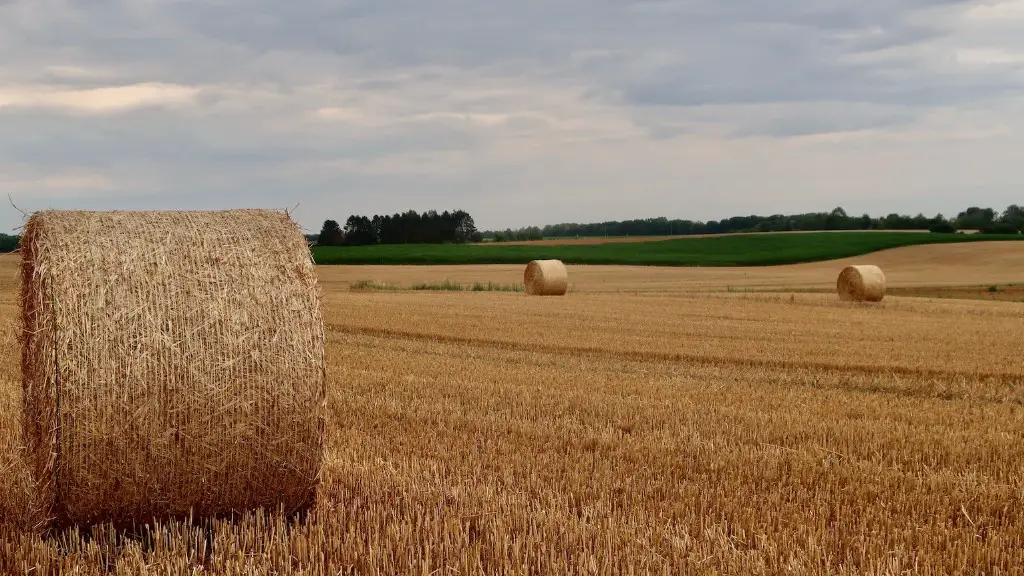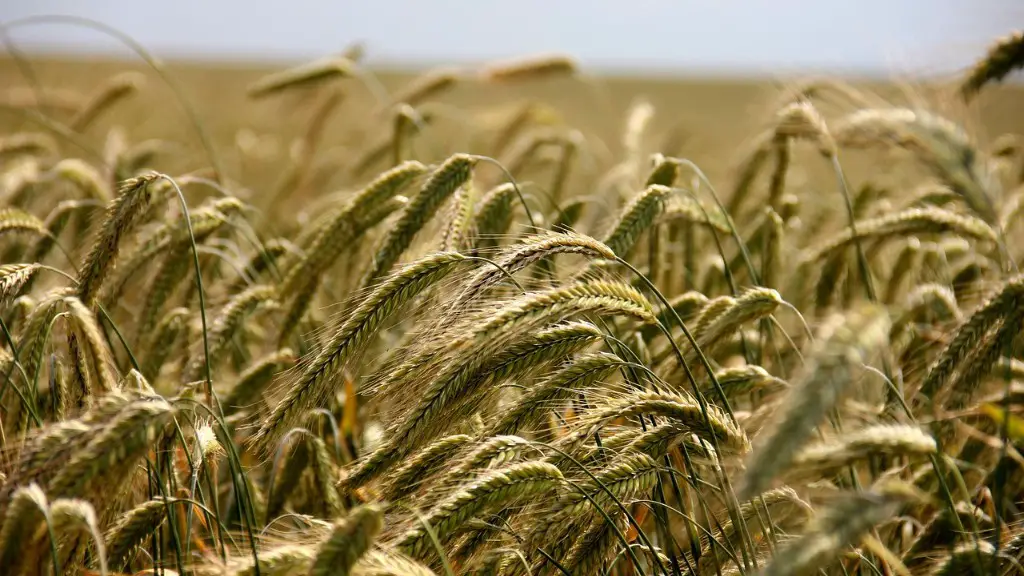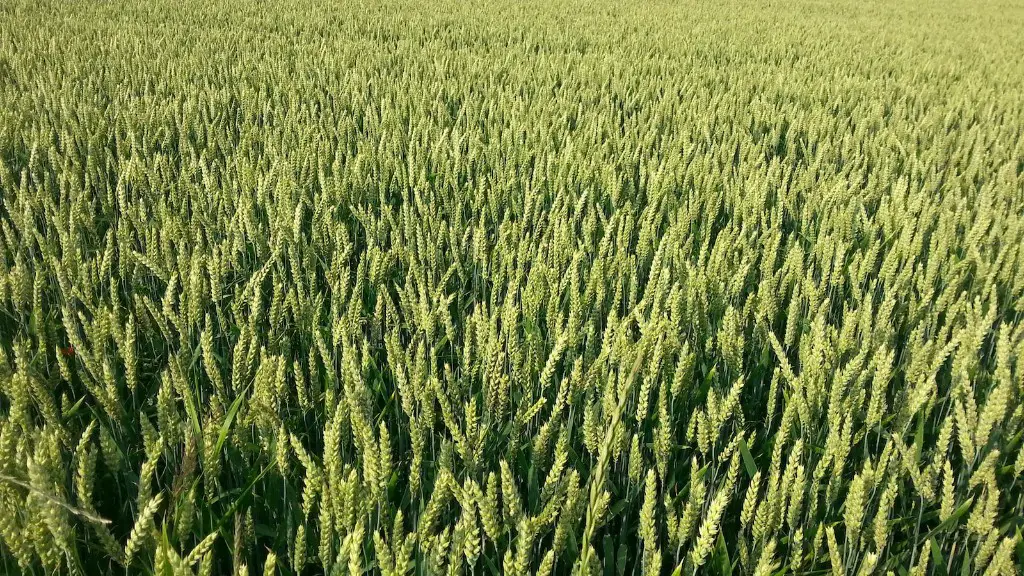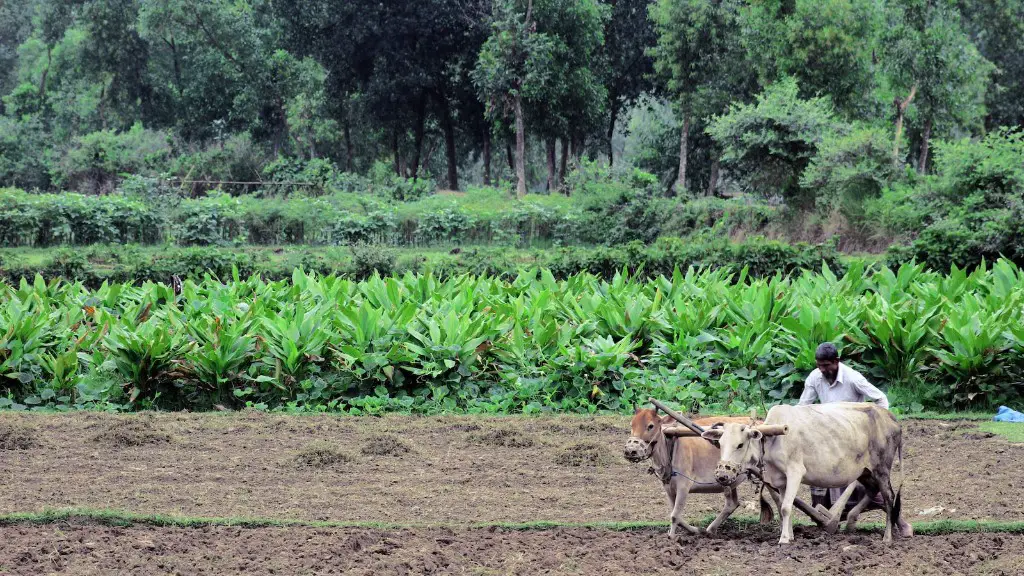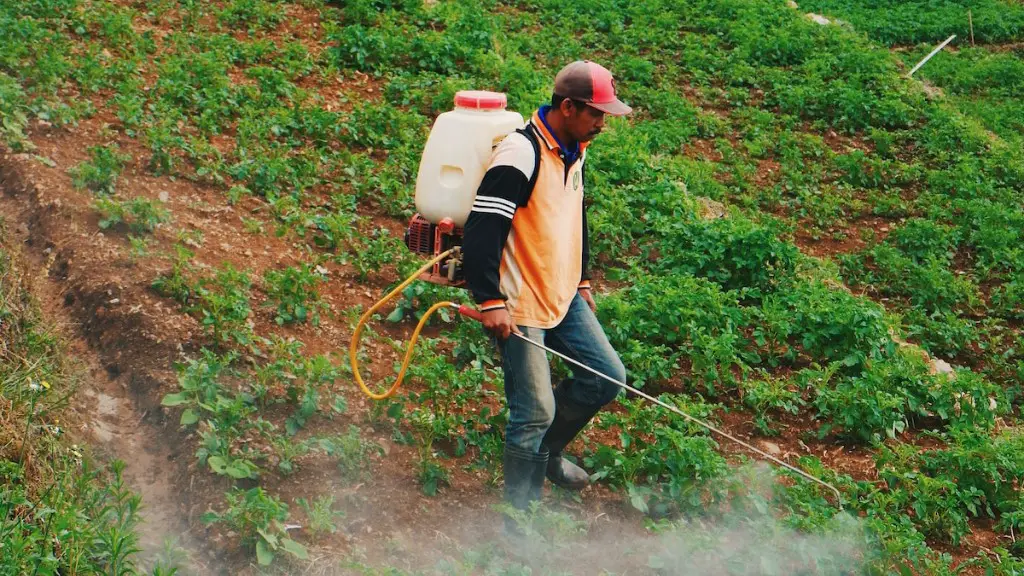Water, an essential component of agricultural production, is used for a variety of purposes. It can irrigate crops, raise livestock, and support landscapes in agricultural areas. Water is also used to facilitate the use of chemicals and other inputs in agricultural ecosystems. There are numerous ways in which water is used in agriculture, and this article will focus on the major functions of water for agricultural producers.
Firstly, water is an essential input for irrigation, which is needed for growers to produce high-yield, high-quality harvests. Irrigation helps to ensure that crops receive the adequate amount of water that is needed for optimal growth. It also helps to control the spread of pests, diseases, and weeds. Additionally, irrigation makes it possible to grow cash crops in areas that may not have access to precipitation. Finally, it can be used to manage soil salinization, which can damage crop yields.
Secondly, water is a key component in livestock production. It is needed to provide food, drinking water, and ample space for activity and exercise. Additionally, it can be used to provide water-based therapeutic measures to help animals recover from ailments or stress. Animal habitats require water to nourish the flora and fauna that provide essential sustenance, and to provide habitats for aquatic species that are associated with livestock production.
Thirdly, water is used to support biogeochemical cycles, which are essential for agricultural production. These cycles involve the transfer of materials and energy between biotic and abiotic elements in the landscape. The transfer of elements is facilitated by water, which helps to provide nutrients and energy for the growth of plants and animals. Additionally, water is used to control soil erosion, which can lead to nutrient depletion in the soil and hinder crop production.
Finally, water is used to facilitate the use of chemicals and other inputs in agricultural production. The use of chemicals can aid in crop protection, pest management, and nutrient management. Likewise, water is used as an input for mechanization, which makes it possible to speed up the production process and increase yields. Additionally, water can be used to maintain crop diversity, which helps to ensure that farms are able to produce a variety of high-quality products.
Irrigation
Irrigation is an essential part of agricultural production and is used to ensure that crops receive the adequate amount of water that is necessary for optimal growth. It also provides numerous benefits to the environment, such as controlling soil salinization, helping to manage weeds and pests, and allowing for the growth of cash crops in areas that may not have access to precipitation. Additionally, irrigation can be used to reduce water consumption and minimise environmental impacts, making it a pivotal component of sustainable agricultural production.
Prior to the implementation of irrigation systems, farmers could rely on natural precipitation to sustain their operations. However, this was often unreliable, as weather patterns are becoming more unpredictable as a result of climate change. As such, irrigation is often used as a means to supplement rainfall and help to ensure that crops receive the water they need for optimal growth. Irrigation systems come in a variety of forms, from traditional furrows and trenches, to more modern systems such as drip or aerosol irrigation.
Irrigation is also a key component of agricultural production in arid and semi-arid regions, where water availability can be scarce. In these areas, irrigation is often used to reduce water consumption and minimise environmental impacts. Additionally, irrigation can be used to protect crops from extreme temperatures, as well as to reduce the impact of drought. Finally, it can be used to support sustainable production practices, as it conserves resources and helps to reduce waste.
In order to maximize the use of irrigation, it is important to use efficient systems and to ensure proper management. In the past, many farmers have experienced water waste due to inefficient irrigation techniques and management practices. It is essential that proper techniques and practices are used to ensure that water is properly utilized and not wasted.
With proper irrigation techniques, farmers can not only produce higher yields, but also save on water costs. Additionally, they can reduce the impact of drought and extreme temperatures, as well as contribute to overall sustainability by conserving resources.
Livestock Production
Water is also an essential input for livestock production, and is used to provide food, drinking water, and ample space for activity and exercise. Additionally, it can be used to provide aquatic habitats for the species that are associated with livestock production. Water is also a vital component of animal waste management, and can be used to reduce the amount of pollutants entering nearby waterways.
Water is also used to assist with the management of livestock diseases and stress. Cattle and other animals can be given water-based therapeutic measures, such as massaging water and providing wading pools. These measures can help to reduce the occurrence of stress-induced illnesses, and can also help to promote healthy growth and development.
Overall, the importance of water for the production of livestock cannot be underestimated. The use of proper management procedures and efficient systems is essential to ensure that the necessary amounts of water are available and not wasted. Additionally, it is essential that livestock producers take measures to reduce pollutant runoff into local waterways, as this can be a major source of water pollution.
In order to maintain high animal welfare standards, it is essential that producers have access to sufficient amounts of clean water for their livestock. This can be achieved through the use of innovative technologies, such as water filtration systems and other water-conserving measures. Additionally, producers should take measures to protect natural water resources, such as avoiding over-pumping and observing environmental regulations.
Overall, the use of water in livestock production is essential for both animal health and environmental protection. Through the implementation of proper management procedures and efficient systems, producers can ensure that their livestock receive the necessary amounts of water, and reduce pollutants entering into nearby waterways.
Biogeochemical cycles
Water is a key component of the biogeochemical cycles that are essential for agricultural production. These cycles involve the transfer of materials and energy between biotic and abiotic elements in the landscape. Water helps to make these cycles possible, providing plants and animals with the necessary nutrients, energy, and habitat that they need to thrive.
Water also plays an important role in controlling soil erosion. Erosion can lead to nutrient depletion in the soil, as well as causing soil particles to be carried away by wind or water and deposited elsewhere. Without adequate water, soil erosion can have serious consequences on the health of agricultural lands, and should be avoided.
Water is also a key component for soil nutrient management. Nutrients are released from the soil through precipitation and infiltration, allowing them to be taken up by crops, which then adds to the nutrients present in the soil for future growth. Additionally, water is used to facilitate the leaching of excess nutrients from the soil, which is important for reducing nutrient accumulation and promoting crop diversity.
In order to ensure that these biogeochemical cycles are functioning properly, it is essential that farmers have access to sufficient amounts of clean water. This water can be accessed through natural sources, such as rainfall, rivers, and streams, as well as through artificial means, such as irrigation. Additionally, farmers should take steps to reduce the amount of pollutants that enter into the water, as this can greatly reduce the quality and quantity of water available for use.
Overall, the use of water for agricultural biogeochemical cycles is essential for sustaining production. Through the implementation of proper management procedures and the maintenance of sufficient water quality, farmers can ensure that their natural resources are properly utilized and nutrients are adequately supplied.
Chemicals and other inputs
Water is also used to facilitate the use of chemicals and other inputs in agricultural production. The use of these chemicals can aid in crop protection, pest management, and nutrient management. For example, pesticides and herbicides can be used to control weeds and pests, and fertilizers can be used to add essential nutrients to the soil.
However, the use of chemicals should be limited, as they can be harmful to the environment and the health of the population. Therefore, it is essential that producers take steps to reduce the amount of chemicals being used, and to take measures to minimize the risks associated with their use. For example, producers should implement Integrated Pest Management (IPM) techniques, which can help to reduce the amount of chemical inputs needed for pest control.
Water is also used to facilitate the mechanization of agricultural production. Mechanization makes it possible to speed up the production process, increase yields, and reduce labor requirements. Additionally, it can be used to reduce food waste, as it can help to speed up the harvesting process and reduce spoilage.
Furthermore, water is used to support crop diversity. It helps to ensure that farms are able to produce a variety of high-quality products. The use of water-conserving production methods can also help to reduce water consumption, which can contribute to overall sustainability.
Overall, the use of water to facilitate the use of chemicals and other inputs in agricultural production is essential. By taking steps to reduce input use and maximize water efficiency, producers can not only reduce their costs, but also contribute to overall sustainability and protect the environment.
Conclusion
In conclusion, water is an essential input for agricultural production. It plays a pivotal role in irrigation, livestock production, biogeochemical cycles, and the use of chemicals and other inputs. In order to maximize the use of water, it is essential that producers take steps to ensure proper management and efficient systems, as well as take measures to reduce input use and maximize water efficiency. Finally, producers should take steps to protect natural resources, and ensure that their livestock have access to clean water for their health and well-being.
